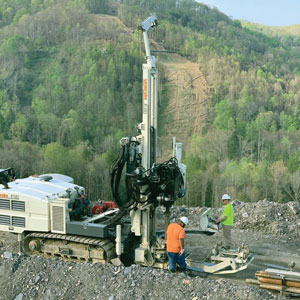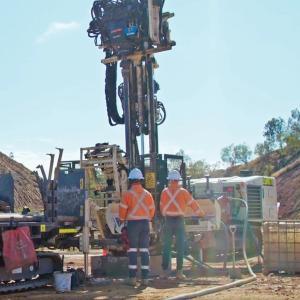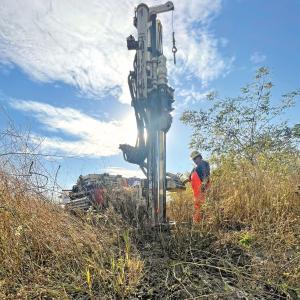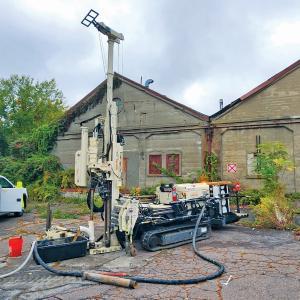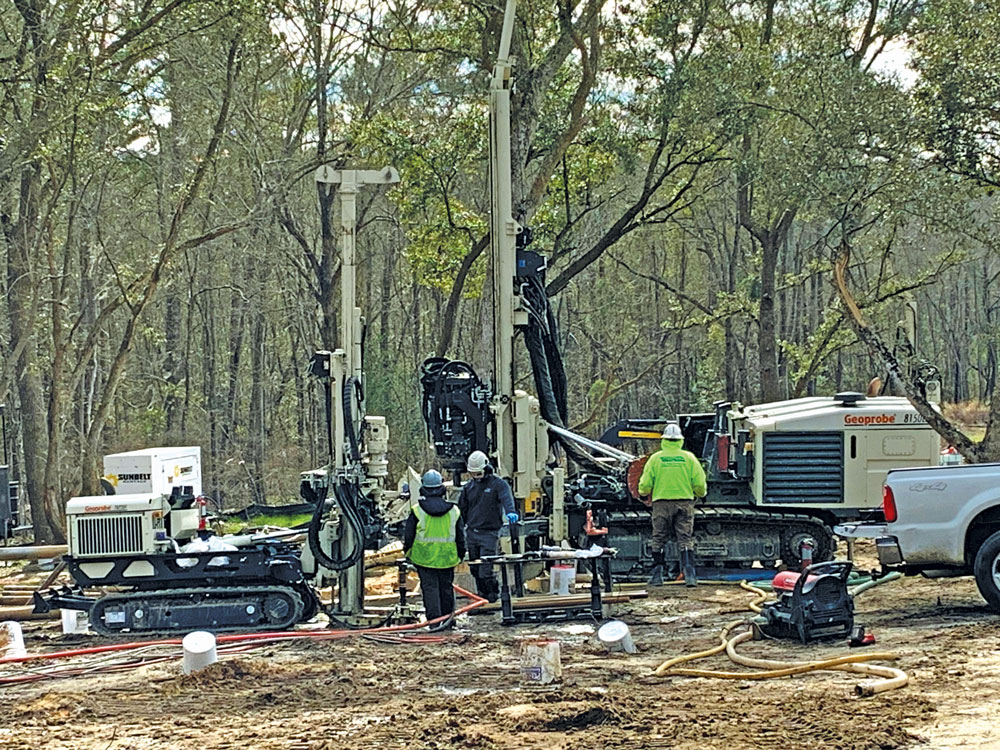
7822DT and 8150LS
For South Atlantic Environmental Drilling and Construction Company (SAEDACCO) in South Carolina, responding to customer needs as an environmental services company means completing all phases – drilling through remediation. Staying true to this business model since 1993, they established a consistent customer base, some of whom they’ve worked with for more than 20 years, and experienced steady business growth. Exploring for several years how sonic drilling might fit their model, they were concerned it might be too expensive for their customers with the high costs and high maintenance. In the end, customer needs and evolving technology convinced them to invest.
“Customers were wanting better unconsolidated sample data. They needed more information from sonic to better map out projects and provide a better understanding of the lithology of the subsurface,” Pete Byer, president, said. “Sonic is another tool in the tool bag to help pinpoint where the next dollars are going to be spent on remediation. It actually helps save money on remediation.”
The hands-free tooling, along with the customer service and support they’d always received from Geoprobe®, were the initial selling points for purchasing an 8140LS and later an 8150LS.
"We like to avoid guys getting their hands near the drill rods whenever possible. The Geoprobe® rod loader was a game changer in that area,” Byer shared.
Adding sonic diversified their expertise and strengthened their market position.
“Our equipment covers a broad spectrum, as such, it’s challenging to have operators who are competent on every piece of equipment,” Byer said. “Having all types of drills — from direct push machines, auger, rotary, air and sonic drills — along with our extensive construction/remediation capabilities gives SAEDACCO a unique advantage in the marketplace.”
This advantage had them on a four-month job outside a southern air force base last spring. Perchloroethylene (PCE) and trichloroethylene (TCE) contaminants were found to have migrated off-base approximately one-mile, most probably sourced from a former base dry cleaning facility that burned down in the late ’60s.
They teamed with AST Environmental for drilling and injection between 122 feet and 170 feet below ground surface, installing 60,000 lbs of BOS 100® into 130 temporary injection points.
“We didn’t believe direct push would reach the necessary depth, and the client lacked key lithologic data,” Byer said. “For 10 percent of borings, we conducted continuous logging so we could pinpoint what we had down there so AST could better target the areas to inject remedial product and get the best contact in the right areas.”
The “trap and treat” in situ remediation technology binds up chlorinated solvents and helps quickly degrade them to harmless amounts. They also performed discrete interval groundwater sampling using an inflatable packer/screen tool to help in the installation of monitoring wells used to measure remediation effectiveness. The goal of the project is to treat the groundwater as it migrates and monitor reduction in contamination from less than 30 ppb to less than five ppb while also reducing potential adverse effects on additional private properties.
Struggling to supply water, fighting freezing temperatures, managing property owner needs, and clearing and constructing access roads were just a few of the challenges encountered as they worked to create the 650-foot long permeable reactive barrier.
“We were buying bentonite pellets by the truckload (approximately 5,000 pails), hauling it in,” Byer said. “We ended up creating a short-term shortage in the market which raised prices and caused some challenges.”
What wasn’t a challenge was the equipment. Using the SAEDACCO sonic rigs’ 4X6 system and AST 7822DT injection through 2.25-inch rods proved the most economic way to reach depth and complete the injection process – satisfying their customer’s needs.
“We knew at 200-feet or less they would be the most efficient drills and give our customer the best lithologic data,” Byer said.
Contact Us
1835 Wall Street
Salina, Kansas 67401
Phone: (785) 825-1842
Photo Gallery


Related Articles
Geoprobe® Introduces Drill Rig Telemetry to the Drilling Industry — monitor rig operations easily through our customer portal, Centerpoint Connected.
ID: 14625 | Date:
The 8150LS fits inside a 40-ft. shipping container - perfect for overseas shipment.
ID: 14616 | Date:
Geoprobe® international service expertise keeps the 7822DT working in the field, not sidelined in the shop.
ID: 14613 | Date:
Pullback power of 7822DT outperforms conventional rigs, overcoming sand friction when driving 4-inch casing.
ID: 14608 | Date:
7822DT’s power and versatility excel at pushing cones and handling diverse geotechnical tasks like here at a Nike facility in Beaverton, Oregon.
ID: 14606 | Date:
Related Videos
ID: 14189
Geoprobe® Sonic Drilling Products
ID: 14188
Geoprobe® Sonic Stack Rack Overview
ID: 14115
Geoprobe® MD4 Display Overview
ID: 13461


